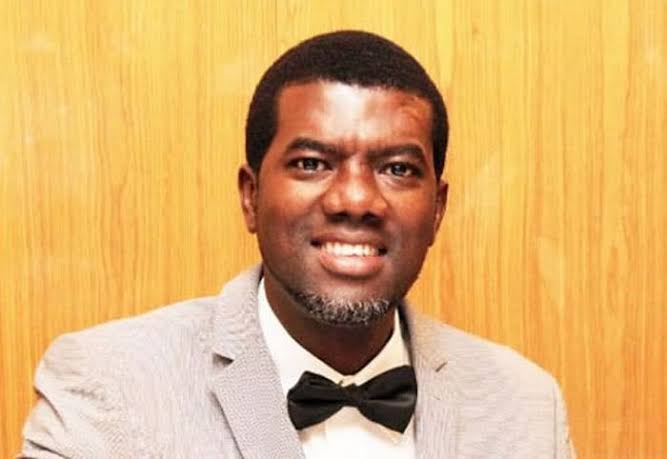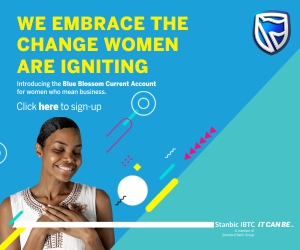GROpinion
[Opinion] Bola Tinubu: Caught In A Monkey


By Reno Omokri
This article was first published in my column, #TheAlternative, in ThisDay on Sunday June 2, 2019. Please read it and judge for yourself if it was prophetic!
The Demystification of Tinubu Continues
On the last day in May 2019, the news came like a bombshell. The Securities and Exchange Commission (SEC) announced that it had concluded its investigation into the activities of Oando Plc and found its management culpable.
The SEC further announced that it was unilaterally ordering Oando’s Group Chief Executive Officer, Mr. Wale Tinubu, his deputy, Mr. Omamofe Boyo and other identified board members to resign and directed that an Extra-Ordinary General Meeting be convened to appoint new directors, on or before July 1, 2019.
Earth shattering. Ground breaking. A bombshell. Ordinarily, these teens are used as exaggerations. But on this occasion, they could even be said to be understatements.
But what is happening here? As the late Afrobeat legend, Fela Kuti, sang in his song Overtake Don Overtake Overtake (ODOO), ‘people wey no know they happy, people wey know them dey look’. (Could that be where the late Bola Ige got the idea for his siddon look brand of politics?).
The truth is that on this issue, there is much more to what is happening than meets the eye. Much, much more.
You see, the Cabal are using Nasir El-Rufai to clip Bola Tinubu’s wings politically, and now they have moved on to the next stage: clipping his financial wings through the Securities and Exchange Commission.
Many people do not know that the relationship between Bola Tinubu and his nephew, Wale Tinubu of Oando goes beyond just familial dealings. It runs much deeper.
For instance, it is Wale Tinubu that introduced Babatunde Raji Fashola to his uncle, Bola Tinubu, eventually paving the way for Fashola to become his Chief of Staff whole he (Bola Tinubu) was Governor of Lagos, and ultimately to make him (Fashola) his successor. The bond between Bola abs Wale runs deep!
Perhaps it is a coincidence that Wale Tinubu’s burgeoning company, Ocean and Oil, suddenly acquired the Federal Government’s shares in Unipetrol in 2000, just a year after his uncle became governor. And perhaps it is not a coincidence. You do the math!
Those who think it is a coincidence that Nasir El-Rufai flippantly unleashed his salvo against Tinubu three weeks ago on May 4, 2019 and the Securities and Exchange Commission moved against Oando on the last day of May, need to do a little digging. I will help them.
Nasir El-Rufai and Oando have history together. Very long and deep history. You see, Nasir El-Rufai was the Director General of the Bureau of Public Enterprises when Wale Tinubu acquired Unipetrol’s shares.
I am a researcher and a very meticulous record keeper. I interview people and keep meticulous records because Nigeria is a dog eat dog dirks and you need to protect yourself if you are involved in Nigerian politics and as far as I am concerned, the pen is mightier than the sword. Hence I keep records.
I interviewed a personnel of the Bureau of Public Enterprises who was present when Wale Tinubu and Eyimofe Boyo acquired Unipetrol.
The fact is that the duo initially came to acquire a hotel according to apocryphal information, sources from the highest levels of the BPE.
Nasir El-Rufai, according to my source, then asked Tinubu and Boyo why they would want to acquire a hotel when they are in oil and gas.
He encouraged them to bid for one of the oil companies then. They had not thought of that because they felt those things were for the big players who had godfathers (back then, Tinubu was not the Jagaban that he is today).
Well, to cut a long story short, the duo went back to their den and repackaged themselves, and to use a cliche, the rest is history.
I am adept at spotting patterns. As Bishop TD Jakes once said, ‘nothing just happens’. If you are not able to spot patterns, you will be so clueless in politics until the day that your enemies will shave your head in your absence (apologies to Chief MKO Abiola).
The fact that Nasir El-Rufai unleashed his salvo three weeks ago, in Lagos, and then this recent move by the Securities and Exchange Commission on a company that is only one degree separated from both El-Rufai and Tinubu, cannot be a coincidence. Not at all.
I will keep exposing these patterns. Unfortunately for these bloodsucking vampires who are retarding Nigeria’s growth, I am not within reach, like Dele Giwa, so the only Letter Bomb they can send to me are spiritual and my God is able to make every weapon formed or fashioned against me fall to the ground.
The move against Oando is Act 2, Scene 1, in a Machiavellian plot involving the Fulani intelligentsia against ab errant Yoruba warlord. It is the tragedy of Alimi and Afonja all over again. Sadly, someone is repeating history because he does not realise that the devil has no new tricks. What he does is what he has always done since he started his mischief making from the Garden of Eden.
Bola Tinubu has been caught in an old South Indian Monkey Trap!
In Robert Pirsig’s seminal book, ‘Zen And The Art Of Motorcycle Maintenance’, the author describes how Indians catch a monkey using an ancient Monkey Trap.
According to Pirsig, the trap “consists of a hollowed-out coconut, chained to a stake. The coconut has some rice inside which can be grabbed through a small hole”. The monkey’s hand fits through the hole, but his clenched fist can’t fit back out. “The monkey is suddenly trapped.”
The Fulani intelligentsia (which I greatly admire) trapped Bola Tinubu in their Monkey Trap by giving him the promise of a future impossible or possible Presidency. As long as Bola Tinubu’s fist is clenched on that promise, he can never escape the trap. He will stay there and allow himself be subjected to whatever disgrace and insult his trappers choose to mete our on him. Sadly, he is a victim of his own inordinate lust for power.
This is the same thing that another branch of the Fulani intelligentsia did in the banking sector using the then Governor of the Central Bank if Nigeria, Sanusi Lamido Sanusi (who is now getting his own comeuppance) to upend those they felt had grown wings by becoming too big for their breeches.
For the above, I refer my readers to Mrs. Cecilia Ibru’s recent interview on the above subject matter (Sanusi persecuted me as he thought I wanted his job at CBN – Cecilia Ibru, Punch Newspapers, May 11, 2019).
The problem with Southern Nigeria, and specifically, people like Bola Tinubu, and Samuel Ladoke Akintola Before Him, is that, while the North preserved and still uses the leadership ethos they learnt from theirs leaders, such as Shehu Uthman Dan Fodio (one of my mentors) and Sardauna Ahmadu Bello (another mentor of mine), Southerners on the other hand have jettisoned the wisdom of their own sages, like Obafemi Awolowo, Bishop Samuel Ajayi Crowther, and yes, Olusegun Obasanjo.
That is why we keep repeating history and instead of accepting responsibility for this, we prefer to blame history of repeating itself.
-



 GRPolitics2 days ago
GRPolitics2 days agoLet the People’s Voice Stand: A High‑Assertiveness Call to Democratic Integrity in the Digital Age
-



 Spotlight3 days ago
Spotlight3 days agoProphetic Outlook for 2026: Help Is on the Way
-



 GRPolitics3 days ago
GRPolitics3 days agoAmidst Atiku and Obi in ADC, Bola Ahmed Tinubu Retains a Significant Structural Advantage Ahead of the 2027 Election – A Data‑Driven Assessment
-



 Culture3 days ago
Culture3 days agoGovernor Mbah Visits Igwe Greg Ugwu, Enyi 1 of Attakwu, Nkanu West LGA







